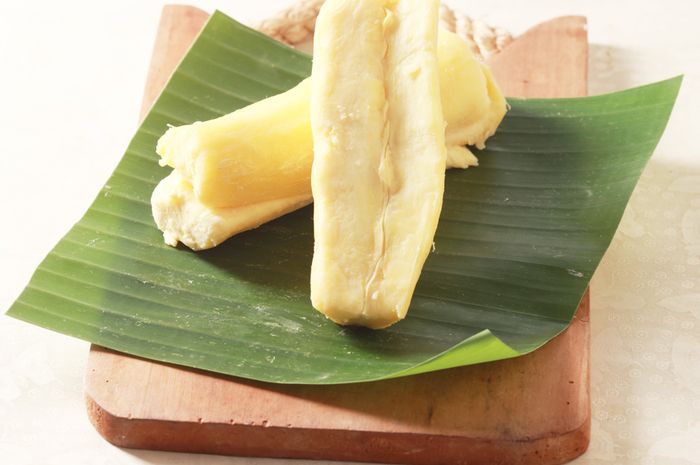
Trained tongues will have a say that yellow cassava tape is better than white cassava since yellow cassava has finer flesh without fibers.
In case you are curious of the way it’s made, you should know that one of the distinguishing factors of peuyeum and cassava tape is the way each is made.
Cassava tape is made by steaming the skinless cassava for 30 minutes until cooled, then sprinkled with yeast powder.
Fermentation process is usually done in a bamboo basket with a banana leaf base. Stored in a room temperature for 2-3 days.
Talking about steaming, cassava steaming time and fermentation duration are strongly influenced by the habits of the local community.
In Central Java, the preferred texture of tape is a rather soft tape. In West Java, the tape is preferably dry and hard.
In making peuyeum, cassava is usually left intact, only cut at the base and edges, then peeled.
After being washed and soaked briefly, the whole cassava is boiled in boiling water until half cooked.
Although it is half cooked it is already good to eat, but not yet soft and not cracked.
In the fermentation process, yeast is spread on the entire surface of cassava with twice the size of yeast for making tape.
At the end, it is this unique method determines the difference between the characteristics of peuyeum and cassava tape.
Peuyeum is also harder and more durable than ordinary cassava tape so that it can be tied and hung.
That is why peuyeum is often also referred to as a hanging tape. (Report: Dina)







